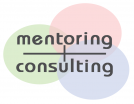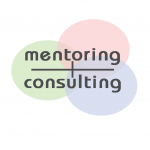Business requirements and technology change over time. Ill-suited or antiquated software and/or poorly integrated sub-systems are a continuous, every day drag on your business. We have consulted on and managed the transitions to modern and efficient systems in several organisations. The following is a typical outline plan for such processes, which would always be adapted to your particular requirements. The methodology usually begins with an accurate systems analysis and carefully moves through change management stages.

Change is vital for the health of any enterprise
The lack of change over time leads to stagnation and atrophy – away from success and prosperity. Change can either be transformational or incremental or indeed a blend of the two. However, most people within organisations have an instinctive aversion to change. Changing involves leaving (to a greater or lesser extent) the well-trodden comfort zones, learning new methods and skills.
A manager seeing an employee stick to old, inefficient ways, rather than the new more accurate and faster ones. When he received the mumbled answer, he then asked: “is that spelled law or lore?” What is comfortable for the employee is often not at all best for the business.
To implement change good processes are required, as outlined below. They begin with Audit & Systems Analysis, then providing both Change Management and Project Management, through all the implementation stages. Many aspects of the business come into focus and review with a view to changes, ensuring best performance.
While being sensitive to the human aspects, experienced external resources like Mentoring-Consulting are very well suited for these steps (phases), as they act with objectivity and impartiality.
- Audit & Analysis – interview stakeholders, review and document:
- Current usage – data fields, data flows, reports, processes, documentation
- Management structures
- Sub-systems integrations
- Security – internal, external
- Support – internal, vendor
- Future requirements in all of the above
- This process results in an agreed Scope or Statement of Works (SOW) as appropriate.
- Determine whether the use of the current systems can be improved, or the systems need replacement.
- If the current systems can be improved, prepare Project Plan with agreed steps and outcomes, likely coordinated with current vendor(s).
- If replacement is required, prepare Request for Quotation based on the SOW and draft Project Plan.
- Identify potential vendors
- Send out RFQ
- Evaluate vendors
- Technology
- References
- Support
- Implementation
- Pricing
- Accounting & other systems integration
- Short list vendors
- Demonstrations
- Follow up Q & A’s
- Update SOW and Project Plan
- Choose vendor
- Negotiate the terms with the vendor, including any customisations if required.
- Implementation
- Project plan, including transitions
- Training plan
- Hardware implications and changes
- Set up
- Data import
- Testing
- Go live
- Follow up
- Services engagement estimates – project management
- Phases 1 -3, month 1 – three days on site, then equivalent three days follow up (phone, Zoom/Teams, emails, documentation, progress reporting)
- Phases 4-7, month 2 – three days equivalent
- Phase 8, months 3-5 – two days equivalent per month

